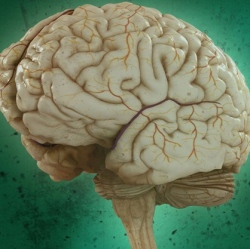
The recent explosion of neuroscience research has resulted in the publication of nearly 2 million papers — more data than any researcher can read and absorb in a lifetime.
That’s why a UCLA team has invented research maps. Easily accessible through an online app, the maps help neuroscientists quickly scan what is already known and plan their next study.
The Aug. 8 edition of the journal Neurondescribes these new tools.
“Information overload is the elephant in the room that most neuroscientists pretend to ignore,” said principal investigator Alcino Silva, a professor of neurobiology at the David Geffen School of Medicine at UCLA and professor of psychiatry at the Semel Institute for Neuroscience and Human Behavior at UCLA. “Without a way to organize the literature, we risk missing key discoveries and duplicating earlier experiments. Research maps will enable neuroscientists to quickly clarify what ground has already been covered and to fully grasp its meaning for future studies.”
Silva collaborated with Anthony Landreth, a former UCLA postdoctoral fellow, to create maps that offer simplified, interactive and unbiased summaries of research findings designed to help neuroscientists in choosing what to study next. As a testing ground for their maps, the team focused on findings in molecular and cellular cognition.
UCLA programmer Darin Gilbert Nee also created a Web-based app to help scientists expand and interact with their field’s map.
“We founded research maps on a crowd-sourcing strategy in which individual scientists add papers that interest them to a growing map of their fields,” said Silva, who started working on the problem nearly 30 years ago as a graduate student and who wrote, along with Landreth, an upcoming Oxford Press book on the subject. “Each map is interactive and searchable; scientists see as much of the map as they query, much like an online search.”
According to Silva, the map allows scientists to zero in on areas that interest them. By tracking published findings, researchers can determine what’s missing and pinpoint worthwhile experiments to pursue.
“Just as a GPS map offers different levels of zoom, a research map would allow a scientist to survey a specific research area at different levels of resolution — from coarse summaries to fine-grained accounts of experimental results,” Silva said. “The map would display no more and no less detail than is necessary for the researcher’s purposes.”
